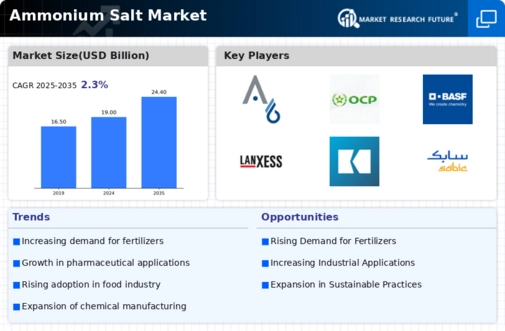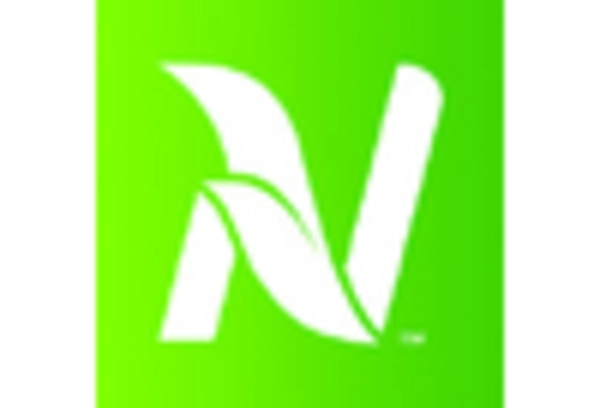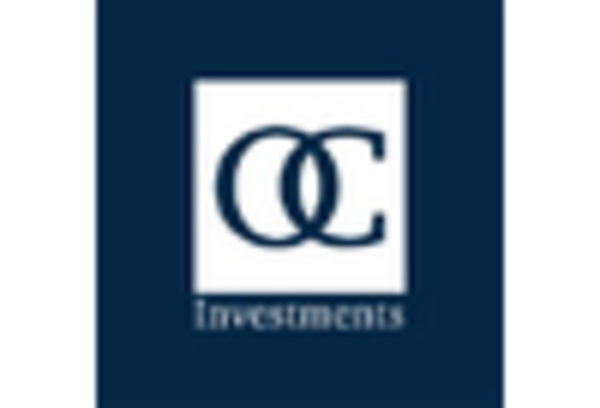Rising Demand in Agriculture
The Ammonium Salt Market is experiencing a notable surge in demand due to its essential role in agriculture. Ammonium salts, particularly ammonium sulfate and ammonium nitrate, serve as vital fertilizers that enhance soil fertility and crop yield. As the global population continues to grow, the need for increased food production becomes paramount. Reports indicate that the agricultural sector accounts for a significant portion of ammonium salt consumption, with projections suggesting a compound annual growth rate of approximately 4% over the next few years. This trend underscores the importance of ammonium salts in meeting food security challenges, thereby driving growth in the Ammonium Salt Market.
Industrial Applications and Growth
The Ammonium Salt Market is bolstered by its diverse industrial applications, particularly in the manufacturing of chemicals and pharmaceuticals. Ammonium salts are utilized as intermediates in the production of various compounds, including dyes, explosives, and cleaning agents. The chemical industry, which has shown resilience and growth, is expected to continue expanding, thereby increasing the demand for ammonium salts. Recent data suggests that the chemical sector represents a substantial share of the ammonium salt market, with a projected growth rate of around 3.5% annually. This industrial reliance on ammonium salts indicates a robust future for the Ammonium Salt Market.
Technological Innovations in Production
Technological advancements play a crucial role in shaping the Ammonium Salt Market. Innovations in production processes, such as more efficient synthesis methods and improved purification techniques, are enhancing the quality and reducing the costs of ammonium salts. These advancements are likely to increase the competitiveness of ammonium salts in various applications, from agriculture to industrial uses. Furthermore, the integration of automation and data analytics in production facilities is expected to streamline operations, leading to higher output and lower waste. As these technologies continue to evolve, they may significantly impact the growth trajectory of the Ammonium Salt Market.
Growing Demand for Clean Energy Solutions
The Ammonium Salt Market is also witnessing growth driven by the increasing demand for clean energy solutions. Ammonium salts are being explored for their potential use in energy storage systems, particularly in the development of advanced batteries and fuel cells. As the world shifts towards renewable energy sources, the need for efficient energy storage solutions becomes critical. Research indicates that ammonium salts could play a pivotal role in enhancing the performance of these technologies. This emerging application not only diversifies the market but also positions the Ammonium Salt Market at the forefront of the clean energy transition.
Environmental Regulations and Sustainability
The Ammonium Salt Market is influenced by the increasing emphasis on environmental regulations and sustainable practices. As industries strive to reduce their carbon footprint, there is a growing shift towards using ammonium salts that are less harmful to the environment. This trend is particularly evident in the agricultural sector, where the adoption of eco-friendly fertilizers is gaining traction. Regulatory frameworks are encouraging the use of ammonium salts that minimize soil and water contamination. Consequently, this shift not only aligns with sustainability goals but also propels the Ammonium Salt Market towards innovative solutions that meet both regulatory and consumer demands.


















Leave a Comment